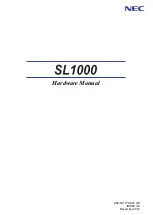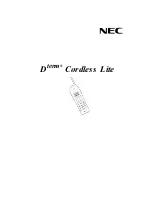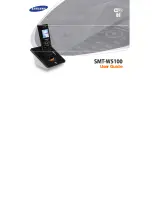
34
CAUTIONS:
Use only the power adapter provided with this product. To obtain a replacement, visit our
website at
www.telephones.att.com
or call
1 (800) 222-3111
. In
Canada, dial
1 (866) 288-4268
.
Use only the supplied rechargeable battery or replacement battery (model BT162342/
BT262342). To order, visit our website at
www.telephones.att.com
or call
1 (800) 222-3111
. In Canada, dial
1 (866) 288-4268
.
To prevent risk of fire or battery explosion, replace with the correct battery type. Dispose of
used batteries according to the instructions.
Especially about cordless telephones
Privacy:
The same features that make a cordless telephone convenient create some
limitations. Telephone calls are transmitted between the telephone base and the handset
by radio waves, so there is a possibility that your cordless telephone conversations could
be intercepted by radio receiving equipment within range of the cordless handset.
For this
reason, you should not think of cordless telephone conversations as being as private as
those on corded telephones.
Electrical power:
The telephone base of this cordless telephone must be connected to a
working electrical outlet which is not controlled by a wall switch.
Calls cannot be made
from the handset if the telephone base is unplugged, switched off or if the electrical
power is interrupted.
Potential TV interference:
Some cordless telephones operate at frequencies that may
cause interference to TVs and VCRs. To minimize or prevent such interference, do not place
the telephone base of the cordless telephone near or on top of a TV or VCR. If interference
is experienced, moving the cordless telephone farther away from the TV or VCR will often
reduce or eliminate the interference.
Rechargeable batteries:
This product contains nickel-metal hydride rechargeable batteries.
Exercise care in handling batteries in order not to create a short circuit with conductive
material such as rings, bracelets, and keys. The battery or conductor may overheat and cause
harm. Observe proper polarity between the battery and the battery charger.
Nickel-metal hydride rechargeable batteries:
Dispose of these batteries in a safe manner.
Do not burn or puncture. Like other batteries of this type, if burned or punctured, they could
release caustic material which could cause injury.
The RBRC® Seal means that the manufacturer is voluntarily participating in an
industry program to collect and recycle nickel-metal hydride rechargeable
batteries when taken out of service within the United States. These batteries
may be taken to a participating local retailer of replacement batteries or
recycling center. You may call 1-800-8-BATTERY® for locations accepting spent
Ni-MH batteries.
RBRC® and 1-800-8-BATTERY® are registered trademarks of the Rechargeable
Battery Recycling Corporation.
•
•
•
•
•
•
•
•











































